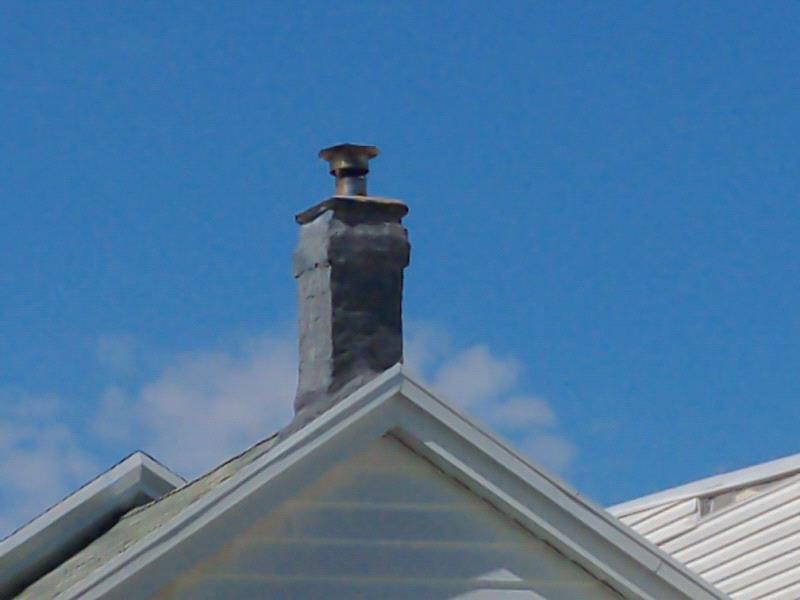Here is something that I see quite often while performing home inspections in New Jersey. I find chimneys covered with tar or chimneys that have been painted. Paint is typically used to enhance the appearance of a chimney and the roofing tar or roofing cement is typically applied in order to avoid repairing or pointing the chimney. Both paint and tar covered chimneys are found while performing home inspections and both are problem.
Both tar and paint seal the porous bricks and do not allow them to breathe properly. If moisture cannot escape from the brick chimney damage will occur over time to both the mortar joints and the brick. Bricks will hold water, in fact roughly 7% or more of the weight of the brick can be attributable to moisture retention. If this moisture is not allowed to escape damage can occur. The first structural element to break down in a painted or tar covered chimney are the mortar joints. Mortar is the cement like material found in between the bricks that allow the bricks to resist both vertical and lateral loads. Mortar is generally not as strong as cement and is more permeable allowing it to breathe and resist freeze damage.
If mortar is porous and moisture trapped in unpainted mortar is allowed to freeze and move through what happens with that painted or tared covered mortar? Over time it becomes damaged, becomes weak and fails causing structural damage to the chimney.
The bricks will be the next structural element to be damaged. Spalling which is essentially brick delamination will occur. Spalling is caused by freezing moisture inside the bricks and will cause the bricks to flake and crumble. Over time significant damage can occur to the chimney. In fact that once nice paint job will begin to look terrible as the spalling bricks peel the exterior paint. Now that we know that applying roofing cement or tar on an exterior of the chimney is not a good idea what do we do about it. There are two options.
Option one: You may decide that keeping the paint or the tar in place is the best alternative although it is doing damage to the chimney structure because the cost of removing the paint or tar is just too high
Option two: You can choose to try to remove the exterior paint. There is no one-size-fits-all solution here but it may be possible to use paint strippers or soft blast the paint from the exterior of the chimney. Soft blasting uses a soft media that is directed at the chimney from the proper angle under high pressure to gently remove the paint without causing damage to the underlying chimney bricks. However these methods may prove just too costly.
When roofing cement or tar is applied it is generally at the top of the chimney from the roofline upward. Here, the best course of action would be to rebuild the top of the chimney because the roofing cement may prove just too challenging to remove from the chimney bricks.
If you are buying a home in New Jersey, make sure to hire a seasoned and thoroughly trained New Jersey home inspector who will be able to spot problems like this and help you make good decisions about the home you are buying. 

